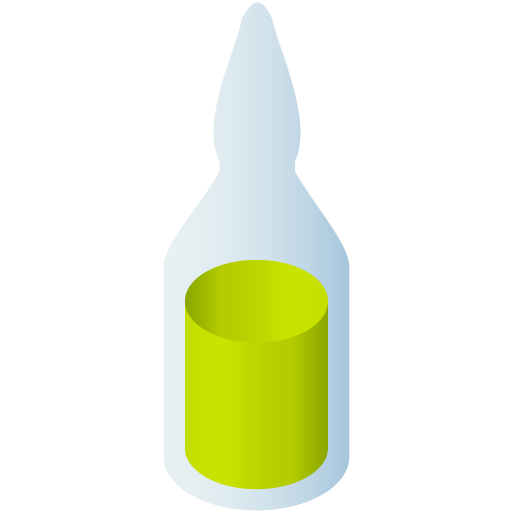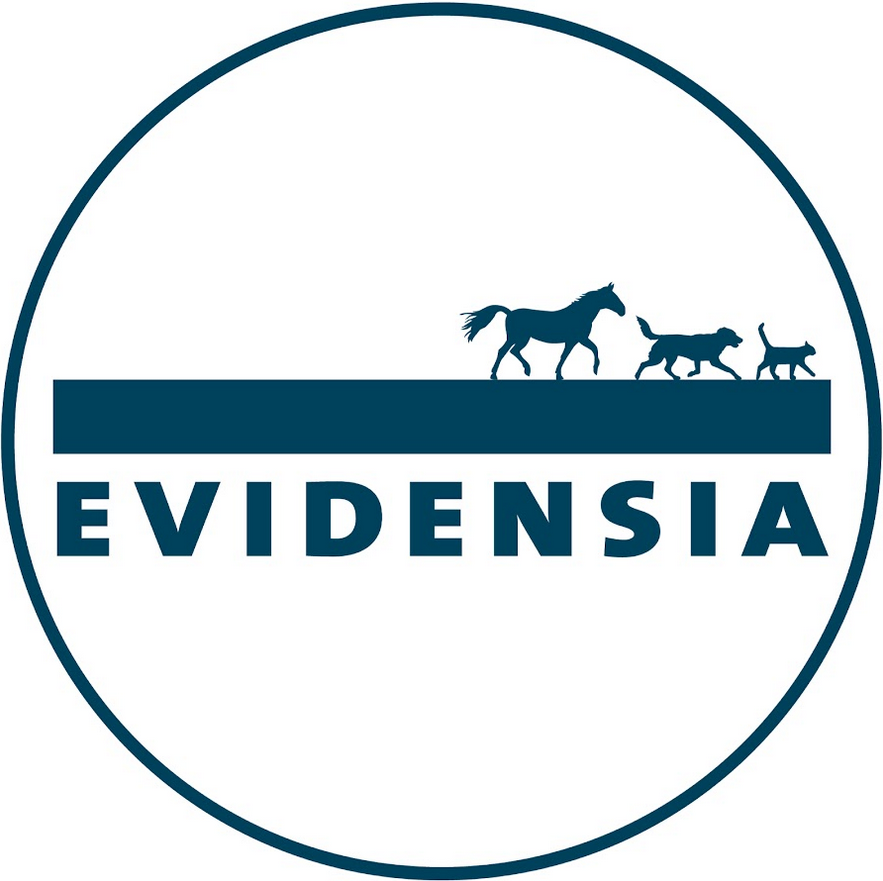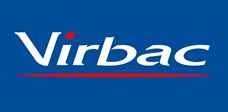Combination therapy
No results were found for your selected species
Nobilis IB 4-91
Active substance
ATC code
Species
Chickens.
Indications
Active immunisation of chickens to reduce the respiratory signs of infectious bronchitis caused by the IBV variant strain 4-91.
Onset of immunity: 3 weeks.
Duration of immunity: 6 weeks.
Dose to be administered and administration route
General
Administration of 1 dose per animal by:
- oculonasal use (coarse spray or intranasal/ocular administration); or - in drinking water use.
The vaccine may be delivered as a freeze-dried cake in a glass vial or as freezedried spheres in cups. In case of the latter presentation the cups may contain 3 up to 100 spheres depending on the required dosages and production yields.
In case of the product presented in cups, do not use the product if the contents are brownish and stick to the container as this indicates that the integrity of the container has been breached. Each container should be used immediately and completely after opening.
Guideline/vaccination scheme
Broiler: The vaccine can be administered to 1-day-old chicks and older chickens by coarse spray or by intranasal/ocular administration. The vaccine can be administered to 7-day and older chickens by drinking water.
Future layers and breeders: The vaccine can be administered to future layers and breeders from day old onwards via intranasal/ocular route or coarse spray. The vaccine can be administered to 7-day and older chickens by drinking water. For prolonged immunity, chickens should be revaccinated every 6 weeks after the initial administration.
Ocular/intranasal administration or coarse spray gives the best responses, and these should be the methods of choice, especially when vaccinating young chickens.
Drinking water use
The vials should be opened under water or the content of the cup(s) should be poured into the water. In both cases mix the water containing the vaccine well before use. After reconstitution the suspension looks clear.
Use cool, clean water to dissolve the vaccine. For administration of the vaccine, as a general rule, dissolve 1,000 doses in one litre per age in days up to a maximum volume of 20 litres per 1,000 doses. For heavy breeds, or in hot weather, the quantity of water may be increased up to 40 litres per 1,000 doses. By adding approximately 2 grams of skimmed milk powder or 20 ml of liquid skimmed milk per litre of water to the drinking water, the vaccine virus retains its activity longer.
Ensure that all the vaccine suspension is consumed within 1 - 2 hours. The vaccine should be given in the early morning as this is the main period of water intake or during the cool period on a hot day. Feed should be available when vaccinating. Water should be withheld before vaccination to make the chickens thirsty. The length of time of water deprivation is strongly dependent on the climatological circumstances. Water withholding should be kept as short as possible with a minimum of half an hour. A sufficient number of water containers to provide adequate drinking space is essential. These should be clean and free from traces of detergents and disinfectants.
Turn on mains water when all the vaccine water has been consumed.
Spray method
The vaccine should preferably be dissolved in distilled water or alternatively in cool, clean water. The appropriate number of vials should be opened under water or the content of the cup(s) should be poured into the water. In both cases mix the water containing the vaccine well before use. After reconstitution the suspension looks clear.
The volume of water for reconstitution should be sufficient to ensure an even distribution when sprayed onto the chickens. This will vary according to the age of the chickens being vaccinated and the management system, but 250 to 400 ml of water per 1,000 doses is suggested. The vaccine suspension should be spread evenly over the correct number of chickens, at a distance of 30–40 cm using a coarse spray, preferably when the chickens are sitting together in dim light. The spray apparatus should be free from sediments, corrosion and traces of disinfectants and ideally should be used for vaccination purposes only.
Intranasal/ocular administration
Dissolve the vaccine in physiological saline solution or sterile distilled water (usually 30 ml per 1,000 doses, 75 ml per 2,500 doses) and administer by means of a standardized dropper. One drop should be applied onto one nostril or one eye. Ensure that the nasal drop is inhaled before freeing the bird.
Vaccination programme
The veterinarian should determine the optimum vaccination schedule according to the local situation.
Guideline when the product is used with Nobilis IB Ma5
The instructions on reconstitution of both lyophilisates and the subsequent application are to be followed as outlined above for spray and intranasal/ocular administration. The same volumes as for the single product should be used. In-use shelf life after mixing: 2 hours.
Adverse reactions
Chickens:
|
Very common (>1 animal / 10 animals treated): |
Respiratory signs1 |
1 May persist for a few days.
Reporting adverse events is important. It allows continuous safety monitoring of a veterinary medicinal product. Reports should be sent, preferably via a veterinarian, to either the marketing authorisation holder or the national competent authority via the national reporting system. See the package leaflet for respective contact details.
Dispensing
POM-V - Prescription Only Medicine – VeterinarianSUMMARY OF PRODUCT CHARACTERISTICS
1. NAME OF THE VETERINARY MEDICINAL PRODUCT
Nobilis IB 4-91 lyophilisate for oculonasal suspension/use in drinking water for chickens
2. QUALITATIVE AND QUANTITATIVE COMPOSITION
Each dose of reconstituted vaccine contains:
Active substance:
Live attenuated avian infectious bronchitis virus (IBV), variant strain 4-91: ≥ 3.6 log10 EID50*
* EID50: 50% embryo infective dose - the virus titre required to produce infection in 50% of the embryos inoculated.
For the full list of excipients, see section 6.1.
3. PHARMACEUTICAL FORM
Lyophilisate for oculonasal suspension/use in drinking water.
Vials: off-white/cream-coloured pellet
Cups: off-white, predominantly sphere shaped
4. CLINICAL PARTICULARS
4.1 Target species
Chickens.
4.2 Indications for use, specifying the target species
Active immunisation of chickens to reduce the respiratory signs of infectious bronchitis caused by the variant strain IB 4-91.
4.3 Contraindications
None.
4.4 Special warnings for each target species
Vaccinate healthy animals only.
The vaccine virus may spread from vaccinated to non-vaccinated chickens and appropriate care should be taken to separate vaccinated from non-vaccinated. Wash and disinfect hands and equipment after vaccinating to avoid spread of the virus.
4.5 Special precautions for use
Special precautions for use in animals
Nobilis IB 4-91 is intended to protect chickens against respiratory signs of disease caused by IBV variant strain 4-91 only and should not be used as a replacement for other IBV vaccines. The product should only be used after it has been established that IBV variant strain 4-91 is epidemiologically relevant in the area. Care should be taken to avoid the introduction of the variant strain into an area where it is not present.
Care should be taken to avoid spread of the vaccine virus from vaccinated chickens to pheasants.
Special precautions to be taken by the person administering the veterinary medicinal product to animals
In case of spray administration, personal protective equipment consisting of masks with eye protection should be worn when handling the veterinary medicinal product.
4.6 Adverse reactions (frequency and seriousness)
In laboratory studies and field trails:
Vaccination with Nobilis IB 4-91 may very commonly induce mild respiratory signs of disease which may persist for a few days depending on the health and condition of the chickens.
In post marketing experience:
In very rare cases mild respiratory signs of disease are reported.
The frequency of adverse reactions is defined using the following convention:
- very common (more than 1 in 10 animals treated displaying adverse reaction(s))
- common (more than 1 but less than 10 animals in 100 animals treated)
- uncommon (more than 1 but less than 10 animals in 1,000 animals treated)
- rare (more than 1 but less than 10 animals in 10,000 animals treated)
- very rare (less than 1 animal in 10,000 animals treated, including isolated reports).
4.7 Use during pregnancy, lactation or lay
Nobilis IB 4-91 has been shown to be safe in layers and breeders during lay.
4.8 Interaction with other medicinal products and other forms of interaction
Safety and efficacy data are available which demonstrate that:
- this vaccine can be mixed and administered with Nobilis IB Ma5 for spray or intranasal/ocular administration to commercial chicks from one day of age onwards. For the mixed products the onset of immunity is 3 weeks, and the duration of immunity is 6 weeks for the claimed protection against Massachusetts and variant strain 4-91 of IBV. The safety parameters of the mixed vaccines are not different from those described for the vaccines administered separately. Simultaneous use of both vaccines increases the risk of recombination of viruses and potential emergence of new variants. However, the chance of a hazard occurring has been estimated very low and is minimized by routinely vaccinating all chickens on the premise at the same time and cleaning and disinfection after each production round. Read the product information of Nobilis IB Ma5 before use.
- Nobilis IB 4-91 can be administered to day-old chicks that are vaccinated either by the subcutaneous or in ovo route with Innovax-ND-IBD.
- Nobilis IB 4-91 can be administered to day-old chicks that are vaccinated either by the subcutaneous or in ovo route with Innovax-ND-ILT.
Nobilis IB 4-91 given at day-old can adversely affect the efficacy of turkey rhinotracheitis (TRT) vaccine given within 7 days.
No information is available on the safety and efficacy of this vaccine when used with any other veterinary medicinal product. A decision to use this vaccine before or after any other veterinary medicinal product therefore needs to be made on a case by case basis.
4.9 Amounts to be administered and administration route
Coarse spray, oculonasal or in drinking water use.
At least 3.6 log10 EID50 (1 dose) per animal by coarse spray, drinking water or intranasal/ocular administration. Where the number of chickens is between the standard dosages, the next higher dosage should be used.
The vaccine may be delivered as a freeze-dried cake in a glass vial or as freeze-dried spheres in cups. In case of the latter presentation the cups may contain 3 up to 100 spheres depending on the required dosages and production yields. In case of the product presented in cups, do not use the product if the contents are brownish and stick to the container as this indicates that the integrity of the container has been breached. Each container should be used immediately and completely after opening.
Guideline
Broiler: The vaccine can be administered to 1-day-old chicks and older chickens by coarse spray or by intranasal/ocular administration. The vaccine can be administered to 7-day and older chickens by drinking water.
Future layers and breeders: The vaccine can be administered to future layers and breeders from day old onwards via intranasal/ocular route or coarse spray. The vaccine can be administered to 7-day and older chickens by drinking water. For prolonged immunity, chickens should be revaccinated every 6 weeks after the initial administration.
Spray method
The vaccine should preferably be dissolved in distilled water or alternatively in cool, clean water. The appropriate number of vials should be opened under water or the content of the cup(s) should be poured into the water. In both cases mix the water containing the vaccine well before use. After reconstitution the suspension looks clear.
The volume of water for reconstitution should be sufficient to ensure an even distribution when sprayed onto the chickens. This will vary according to the age of the chickens being vaccinated and the management system, but 250 to 400 ml of water per 1,000 doses is suggested. The vaccine suspension should be spread evenly over the correct number of chickens, at a distance of 30–40 cm using a coarse spray, preferably when the chickens are sitting together in dim light. The spray apparatus should be free from sediments, corrosion and traces of disinfectants and ideally should be used for vaccination purposes only.
Drinking water
The vials should be opened under water or the content of the cup(s) should be poured into the water. In both cases mix the water containing the vaccine well before use. After reconstitution the suspension looks clear.
Use cool, clean water to dissolve the vaccine. For administration of the vaccine, as a general rule, dissolve 1,000 doses in one litre per age in days up to a maximum volume of 20 litres per 1,000 doses. For heavy breeds, or in hot weather, the quantity of water may be increased up to 40 litres per 1,000 doses. By adding approximately 2 grams of skimmed milk powder or 20 ml of liquid skimmed milk per litre of water the virus retains its activity longer.
Ensure that all the vaccine suspension is consumed within 1–2 hours. The vaccine should be given in the early morning as this is the main period of water intake or during the cool period on a hot day. Feed should be available when vaccinating. Water should be withheld before vaccination to make the chickens thirsty. The length of time of water deprivation is strongly dependent on the climatological circumstances. Water withholding should be kept as short as possible with a minimum of half an hour. A sufficient number of water containers to provide adequate drinking space is essential. These should be clean and free from traces of detergents and disinfectants.
Turn on mains water when all the vaccine water has been consumed.
Intranasal/ocular administration
Dissolve the vaccine in physiological saline solution or sterile distilled water (usually 30 ml per 1,000 doses, 75 ml per 2,500 doses) and administer by means of a standardized dropper. One drop should be applied onto one nostril or one eye. Ensure that the nasal drop is inhaled before freeing the bird.
Ocular/intranasal administration or coarse spray gives the best responses, and these should be the methods of choice, especially when vaccinating young chickens.
Vaccination programme
The veterinarian should determine the optimum vaccination schedule according to the local situation.
Guideline when the product is used with Nobilis IB Ma5
The instructions on reconstitution of both lyophilisates and the subsequent application are to be followed as outlined above for spray and intranasal/ocular administration. The same volumes as for the single product should be used.
In-use shelf life after mixing: 2 hours.
4.10 Overdose (symptoms, emergency procedures, antidotes), if necessary
Ten times the maximum dose was shown to be safe for the target species by all the recommended routes and methods of administration.
4.11 Withdrawal period(s) Zero days.
5. IMMUNOLOGICAL PROPERTIES
Pharmacotherapeutic group: Immunologicals for Aves, domestic fowl, live viral vaccine, avian infectious bronchitis virus. ATCvet code: QI01AD07.
Active immunisation against avian infectious bronchitis virus variant strain IB 4-91 which causes infectious bronchitis in chickens.
6. PHARMACEUTICAL PARTICULARS
6.1 List of excipients
Sorbitol
Gelatine
Pancreatic digest of casein
Disodium phosphate
Water for injections
6.2 Major incompatibilities
Do not mix with any other veterinary medicinal product, except Nobilis IB Ma5 recommended for use with the veterinary medicinal product.
6.3 Shelf life
Shelf life of the veterinary medicinal product in glass vials as packaged for sale: 9 months.
Shelf life of the veterinary medicinal product in aluminium laminate cups as packaged for sale: 24 months.
Shelf life after reconstitution according to directions: 2 hours.
6.4 Special precautions for storage
Store in a refrigerator (2 °C – 8 °C).
Do not freeze.
Protect from light.
6.5 Nature and composition of immediate packaging
Lyophilisate
Glass vial (type I hydrolytic glass) of 10 ml containing 500; 1,000; 2,500; 5,000 or 10,000 doses closed with a halogenobutyl rubber bung and sealed with a coded aluminium cap.
Sealed aluminium laminate cup with a polypropylene (cup) and polypropylene/polyethylene (lid) contact layer containing 1,000; 2,500; 5,000 or 10,000 doses.
Packaging
Cardboard box with 1 or 10 vials of 500 doses.
Cardboard box with 1 or 10 vials of 1,000 doses.
Cardboard box with 1 or 10 vials of 2,500 doses.
Cardboard box with 1 or 10 vials of 5,000 doses.
Cardboard box with 1 or 10 vials of 10,000 doses.
Cardboard box with 10 cups of 1,000 doses.
Cardboard box with 10 cups of 2,500 doses.
Cardboard box with 10 cups of 5,000 doses.
Cardboard box with 10 cups of 10,000 doses.
PET plastic box with 12 cups of 1,000 doses
PET plastic box with 12 cups of 2,500 doses
PET plastic box with 12 cups of 5,000 doses PET plastic box with 12 cups of 10,000 doses
Not all pack sizes may be marketed.
6.6 Special precautions for the disposal of unused veterinary medicinal products or waste materials, derived from the use of such products
Any unused veterinary medicinal product or waste materials derived from such veterinary medicinal product should be disposed of in accordance with local requirements.
7. MARKETING AUTHORISATION HOLDER
MSD Animal Health UK Limited
Walton Manor
Walton
Milton Keynes
Buckinghamshire
MK7 7AJ
United Kingdom
8. MARKETING AUTHORISATION NUMBER
Vm 01708/5043
9. DATE OF FIRST AUTHORISATION
09 June 1998
10. DATE OF REVISION OF THE TEXT
March 2022

Approved: 24 January 2023

| Art. Nr. | 01708/5043 |
|---|---|
| EAN | 8713184155740 |
 TRUSTED SOURCE
TRUSTED SOURCE








